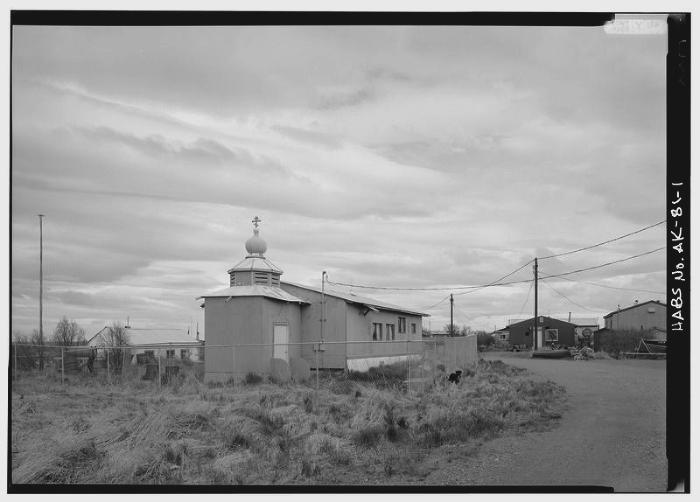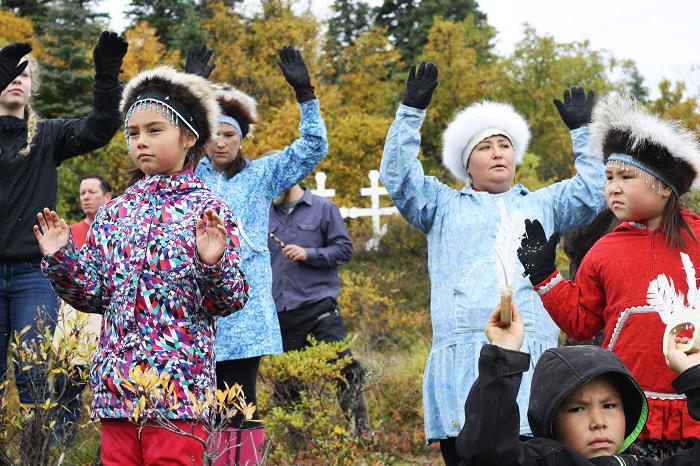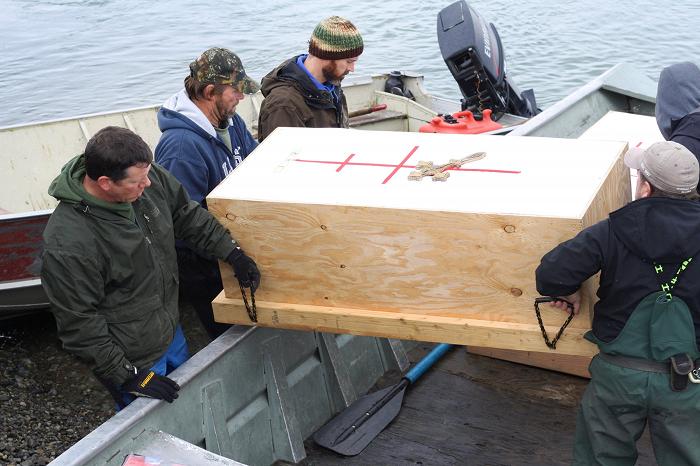 |
Canku Ota
|
 |
|
(Many Paths)
|
||
|
An Online Newsletter
Celebrating Native America
|
||
|
December 2017 - Volume
15 Number 12
|
||
|
|
||
|
In Emotional Homecoming,
Smithsonian Repatriates 24 Sets Of Human Remains
|
||
|
by Jason Daley - SMITHSONIAN.COM
|
||
|
Collected by an
anthropologist in 1931, the National Museum of Natural History returned
the bones to the village of Igiugig
In late September, the remains of 24 native Alaskans excavated by a Smithsonian anthropologist returned to their ancestral home for the first time in almost nine decades. The repatriation request was made by the village of Igiugig, which is mostly made up of indigenous Alaskan Yupik people, who claim affiliation with the bones, reports Avery Lill at NPR. The bones and funerary objects were originally collected from the area in 1931 by Aleš Hrdlicka, head of the physical anthropology department at what is now the Smithsonian's National Museum of Natural History. Lill reports that the repatriation of the bones was a two-year process. After the village requested the returns of the remains, the National Museum of Natural History, which housed them, went through the process of verifying that the remains were affiliated with the residents of Igiugig by examining Hrdlicka's diary entries and other documents. The museum also consulted with the villagers, who related the fact that the now-abandoned village of Kaskanak, where most of the remains were found, was once inhabited by residents of Igiugig. "This was a collaborative effort between the Smithsonian and our village, but it was really us telling them that these are ours," AlexAnna Salmon, a researcher and Igiugig local, tells Lill. "This is who we are. It's not anthropology coming from the other direction, telling you who you are and where you came from." The return of sacred objects and human remains to indigenous peoples has been bolstered in recent years by a series of federal laws. In 1989 Congress enacted the National Museum of the American Indian Act, which put the Smithsonian in charge of a new museum and instructed the Institution to inventory, identify, and consider for return—if requested by a Native community or individual—human remains and funerary objects?. In 1990, the Native American Graves Protection and Repatriation Act instructed any federal agency or federally funded institution to do the same.
Since then, the Smithsonian alone has repatriated or made available for repatriation the remains of more than 6,100 individuals 250,000 funerary objects and 1,400 sacred objects, according to the Institution's 2016 annual report on repatriation activities. But repatriation is not as simple as returning artifacts or remains to tribal bodies. Some remains, for instance, are hundreds or thousands of years old and it is difficult to find direct ancestors or culturally affiliated peoples. Making a repatriation claim can also take time, money and research, which makes the pursuit of repatriation challenging. "There are 560 plus tribes and they all have their own protocols, organization and problems that they are trying to deal with on a day-to-day basis," Bill Billeck, director of the National Museum of Natural History's Repatriation Office, tells Smithsonian.com. "While they may be interested in repatriation they have not have had the time and resources to work on it." Last year, the National Museum of Natural History repatriated the remains of 25 individuals and the National Museum of the American Indian repatriated 26. This year, Billeck says that in addition to the 24 sets of remains returned to Alaska, the National Museum of Natural History has returned eight other sets of remains to four native communities. Repatriation efforts are expected to continue for years or decades to come.
For the people of Igiugig, the repatriation was an emotional coming home ceremony. The remains were flown into town in a small prop plane and placed in three wooden coffins. They were then taken to the Russian Orthodox Church in town where they were given a funeral. Afterward, they were loaded onto a boat and taken to a burial site overlooking the Kvichak River, where a priest, villagers and Kirk Johnson, director of the National Museum of Natural History, attended the reburial. Billeck says repatriation can serve as a bridge between indigenous people and the research community, who have much to learn from one another. In fact, he says, this week a resident of Igiugig is coming to the museum to look at research materials related to the community's ancestral peoples. "Repatriation is the beginning of, in some cases, a long relationship," Billeck says.
Jason Daley is a Madison, Wisconsin-based writer specializing
in natural history, science, travel, and the environment. His work
has appeared in Discover, Popular Science, Outside, Men's Journal,
and other magazines. |
||||||
|
|
|
|
||
|
|
||
| Canku Ota is a free Newsletter celebrating Native America, its traditions and accomplishments . We do not provide subscriber or visitor names to anyone. Some articles presented in Canku Ota may contain copyright material. We have received appropriate permissions for republishing any articles. Material appearing here is distributed without profit or monetary gain to those who have expressed an interest. This is in accordance with Title 17 U.S.C. Section 107. | ||
|
Canku Ota is a copyright ©
2000 - 2017 of Vicki Williams Barry and Paul Barry.
|
||
 |
 |
|
|
The "Canku
Ota - A Newsletter Celebrating Native America" web site and
its design is the
|
||
|
Copyright ©
1999 - 2017 of Paul C. Barry.
|
||
|
All Rights Reserved.
|
||


